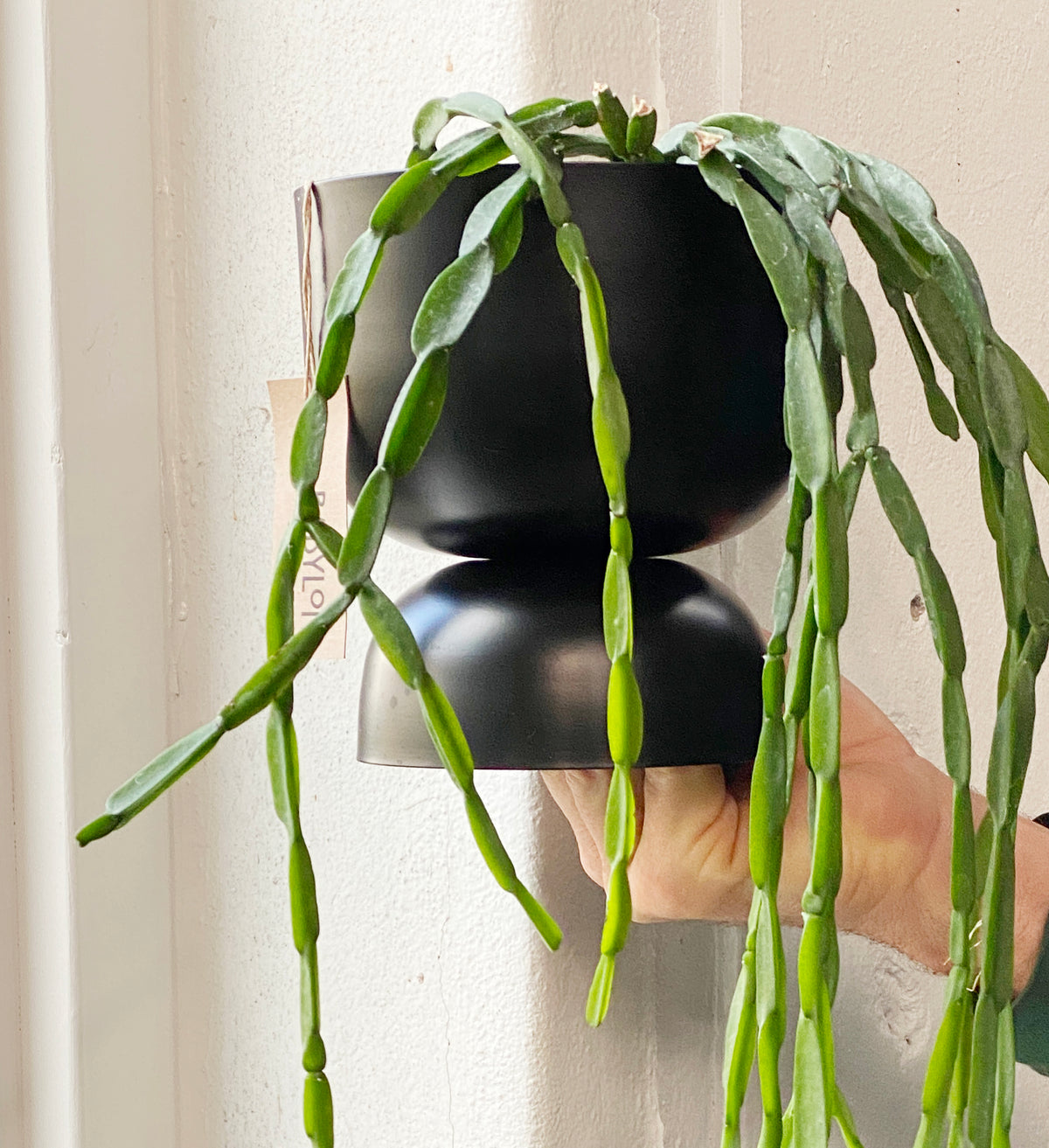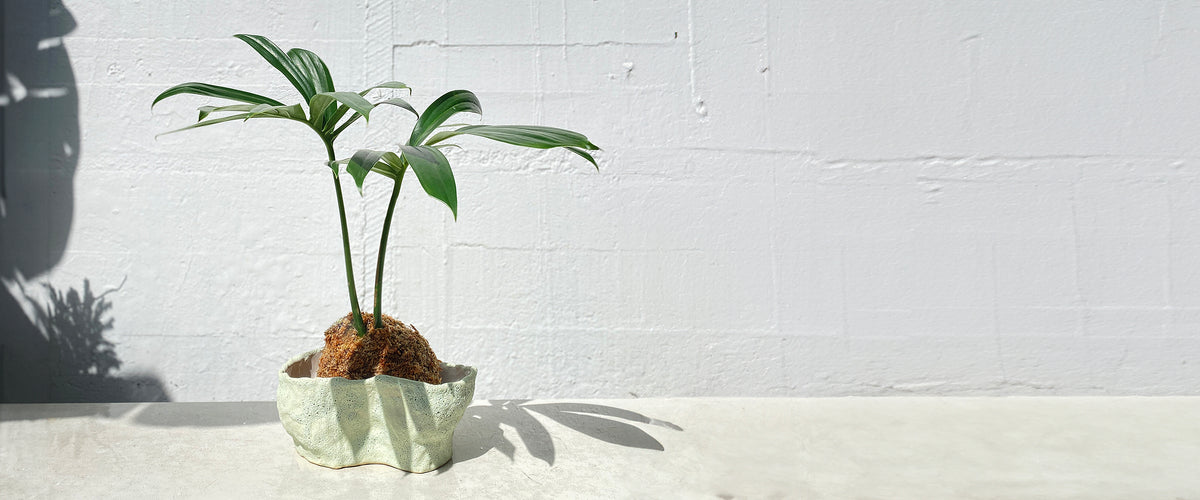Rhipsalis var.

Botanical Name: Rhipsalis
Common Name: Mistletoe cactus
Plant Family: Cactaceae
About the fascinating Rhipsalis….
The genus Rhipsalis consists of some 35 species of jungle cacti. These plants grow mostly epiphytically, hanging from the boughs of trees, and occasionally on the surface of rocks. Rhipsalis tend to cascade, with long jointed stems. Stems are either spaghetti-like (R. baccifera), angular (R. paradoxa) or flattened (R. pachyptera).
Unlike most cacti, which stand in full sun, these guys thrive in the dappled light of the tropical rainforest understory. Rhipsalis are found throughout tropical parts of the Americas, with the majority of species (29) being endemic to Brazil. Rhipsalis are also found in Africa, Madagascar and Sri Lanka, making them the only cacti to occur naturally outside of the New World.
In Nigerian ethnomedicine, a preparation of R. neves-armondii has been traditionally used in the treatment of cancer and rheumatic diseases. A recent scientific study found it to effectively inhibit the development of inflammation and cancer in cells and rats.
Though this genus is cultivated as an indoor plant, in the wild it is threatened by habitat loss.
Rhipsalis like….
Bright, indirect light, and can handle direct morning or evening light. However, Rhipsalis are super hardy and can tolerate a range of conditions including very low light.
Rhipsalis also like it when humanity protects tropical rainforests, and stops the destruction of jungle habitat that threatens its wild siblings with extinction.
Temperature/ Humidity
They like warm temperatures, and can happily handle between 15° and 30°C. Rhipsalis prefer moderate to high humidity, so don’t place anywhere too drafty, or next to a heating or A/C unit. To increase humidity try grouping plants together, using a pebble tray, humidifier, or misting. You can always let your Rhipsalis live outside in a sheltered position over summer to give it a break from indoors.
Watering….
Because of their epiphytic habit, Rhipsalis don’t naturally have access to groundwater. Usually, they have a small root system and the leaves and stems are more or less succulent to support drying out of the substrate.
Water once the top inch (summer) or two (winter) of soil becomes dry. Mist when temps are high, but hold back over winter. Allow them to drain after watering. Puckering stems indicate that the plant is under watered, and could use a big drink.
Soil or mix….
Rhipsalis tend to thrive in a well-aerated, rich soil mixture, which provides more nutrients than your standard cacti mix. A good quality potting mix is recommended, mixed with orchid bark, and perlite or pumice for aeration. If potting directly into a pot with no drainage, throw in a healthy amount of scoria at the bottom, as these guys don’t like having wet feet.
Flowering….
Small, white, mistletoe-like flowers are produced from the ends of stems over the warmer seasons. For the best view of the flowers, hang your Rhipsalis from somewhere high and look up.
Fertilization….
Feed with a liquid fertiliser designed for cacti or general houseplants, e.g. seaweed based, monthly during summer and spring.
Propagation….
Rhipsalis can be easily propagated through stem cuttings. Using a clean blade, cut a portion of the stem at least 10cm long. Put in water, or dip in rooting hormone and plant cut end down, 5cm into the soil. You may want to take several cuttings and plant together in order to get a full plant quicker. Make sure the soil stays lightly moist and doesn’t dry out while you are trying to grow roots. You can make a little plastic tent over your pot to increase the humidity, but take it off every few days to let the air circulate.
Diseases
Rhipsalis are very hardy, and subject to only a few diseases.
Root rot can occur to plants in waterlogged soil. Roots turn brown, black and mushy, and when advanced, the foliage can yellow and droop. Be careful not to overwater. Always check the soil before watering, a moisture meter can be useful. Trim the affected roots and soak in a hydrogen peroxide solution before repotting into fresh soil. Discard the old soil as root rot can spread by soil pathogens. Root rot can be lethal, so if your case is advanced you may have better luck cutting and propagating the healthy foliage to save the plant.
Mealybug: small insects with a soft, white coating that usually appear in large colonies. When detected, isolate your plant and remove each bug with a disposable wipe soaked with a houseplant bug spray. Make sure you check every nook and cranny, including stem joins, in the top layer of soil, and under the rim of the nursery pot. Spray down the entire plant, and leave in isolation for at least a couple of weeks, and until no bugs are detected.
Maintenance (pruning, legginess, repotting)
There shouldn’t be any need for pruning, though you may want to snip off any broken stems if any accident occur. Rhipsalis won’t outgrow their pot for a while, but you may want to repot every few years to refresh the soil. Be very gentle as you repot so not to break the stems.
Toxicity
Rhipsalis are considered non-toxic. If your dog, cat, turtle or baby eats this plant, they will be fine. You might cry though.
Calvente, A., Andreata, R. & Vieira, R. (2008). Stem anatomy of Rhipsalis (Cactaceae) and its relevance for taxonomy. Plant Syst Evol (276), 1–7.
Akunne, T. et al. (2016). Anti-inflammatory and anticancer activities of extract and fractions of Rhipsalis neves-armondii (Cactaceae) aerial parts. Cogent Biology 2.1: 1237259.
Okereke, E. et al. (2020). Immunomodulatory potentials of Rhipsalis neves-armondii K. Schum.(cactaceae) aerial parts. Pharmacology Online vol.2 146-155.
https://www.aspca.org/pet-care/animal-poison-control/toxic-and-non-toxic-plants/mistletoe-cactus

